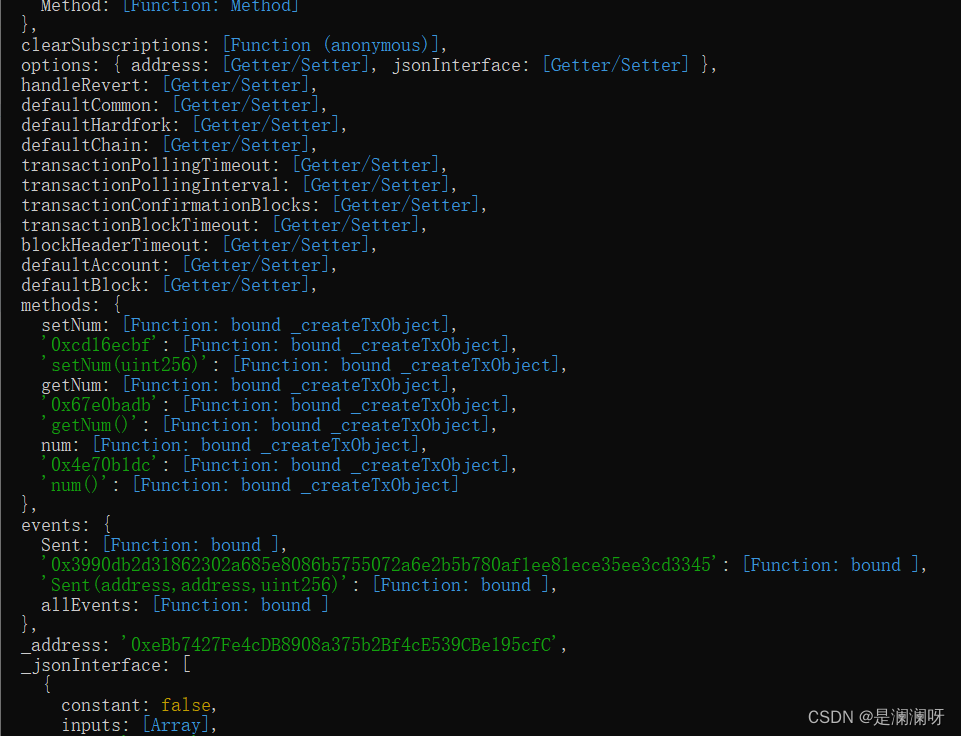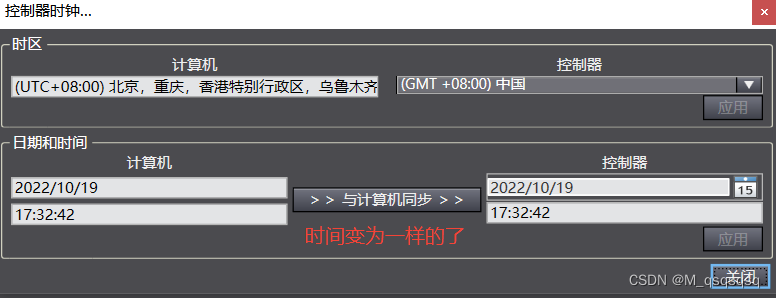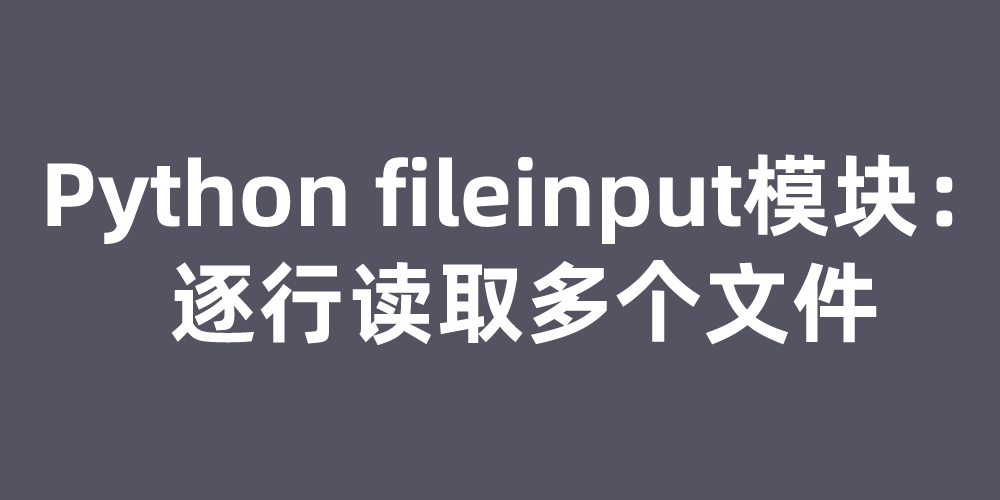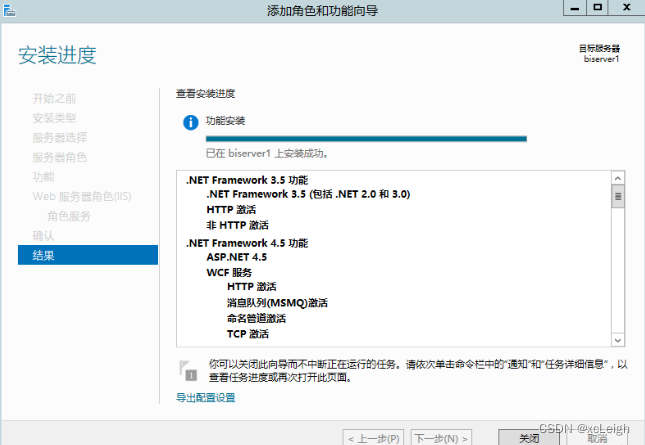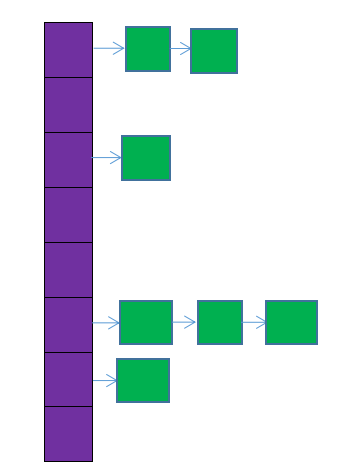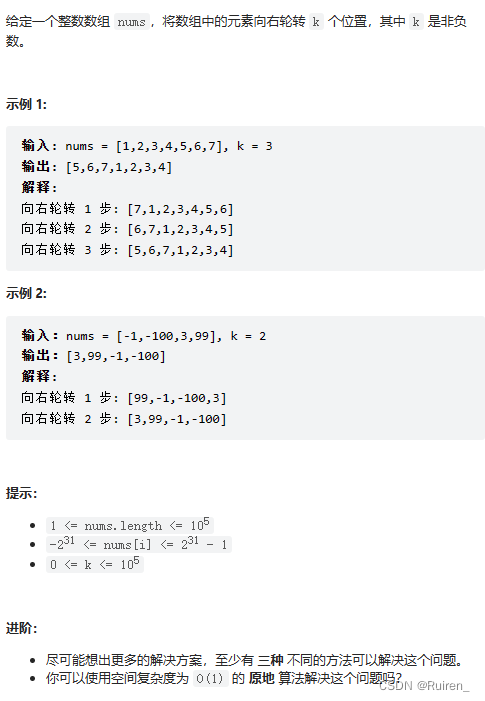写在前面:各位看到此博客的小伙伴,如有不对的地方请及时通过私信我或者评论此博客的方式指出,以免误人子弟。多谢!如果我的博客对你有帮助,欢迎进行评论✏️✏️、点赞👍👍、收藏⭐️⭐️,满足一下我的虚荣心💖🙏🙏🙏 。
前面几篇已经搭建好了授权服务uaa和资源服务product,并且也测试过了客户端模式、密码模式,还使用了JWT模式来授权认证,但是还没有记录另外两种模式,这里统一记录一下OAuth2的四种授权模式。
目录
环境搭建
Web安全配置
授权服务器配置
配置客户端信息
配置令牌管理器
配置令牌访问端点
配置令牌端点的安全约束
四种授权模式
授权码模式
简化模式
密码模式
客户端模式
完整代码
授权服务
Web安全
Token配置
环境搭建
新建oauth2服务,引入如下依赖:
<dependency>
<groupId>com.alibaba.cloud</groupId>
<artifactId>spring-cloud-starter-alibaba-nacos-discovery</artifactId>
</dependency>
<dependency>
<groupId>org.springframework.cloud</groupId>
<artifactId>spring-cloud-starter-oauth2</artifactId>
</dependency>
<dependency>
<groupId>org.springframework.cloud</groupId>
<artifactId>spring-cloud-starter-security</artifactId>
</dependency>
<dependency>
<groupId>org.springframework.boot</groupId>
<artifactId>spring-boot-starter-web</artifactId>
</dependency>
<dependency>
<groupId>org.springframework.boot</groupId>
<artifactId>spring-boot-starter-actuator</artifactId>
</dependency>
<dependency>
<groupId>mysql</groupId>
<artifactId>mysql-connector-java</artifactId>
</dependency>
<dependency>
<groupId>com.alibaba</groupId>
<artifactId>druid-spring-boot-starter</artifactId>
</dependency>
<dependency>
<groupId>org.springframework.boot</groupId>
<artifactId>spring-boot-starter-jdbc</artifactId>
</dependency>
<dependency>
<groupId>org.springframework.boot</groupId>
<artifactId>spring-boot-starter-test</artifactId>
<scope>test</scope>
</dependency>
<dependency>
<groupId>org.projectlombok</groupId>
<artifactId>lombok</artifactId>
</dependency>
<dependency>
<groupId>com.alibaba</groupId>
<artifactId>fastjson</artifactId>
</dependency>
<dependency>
<groupId>com.baomidou</groupId>
<artifactId>mybatis-plus-boot-starter</artifactId>
</dependency>Web安全配置
@Configuration
@EnableWebSecurity
@EnableGlobalMethodSecurity(prePostEnabled = true)
public class WebSecurityConfig extends WebSecurityConfigurerAdapter {
@Bean
public PasswordEncoder passwordEncoder() {
return new BCryptPasswordEncoder();
}
@Override
@Bean
public AuthenticationManager authenticationManagerBean() throws Exception {
return super.authenticationManagerBean();
}
@Override
public void configure(HttpSecurity http) throws Exception {
http.authorizeRequests()
.antMatchers("/admin").hasAuthority("admin")
.antMatchers("/common").permitAll()
.anyRequest().authenticated()
.and().formLogin()
.and().csrf().disable();
}
@Autowired
public void globalUserDetails(AuthenticationManagerBuilder auth) throws Exception {
auth.inMemoryAuthentication()
.withUser("zhangsan")
.password(passwordEncoder().encode("123456"))
.roles("common");
}
}授权服务器配置
配置客户端信息
这里为了快速的将整个流程记录完整,客户端信息及后面用到的用户信息都存在内存中。
@Override
public void configure(ClientDetailsServiceConfigurer clients) throws Exception {
clients.inMemory()
.withClient("dev-client")
.secret(new BCryptPasswordEncoder().encode("123456"))
// 资源列表
.resourceIds("product-service")
// 此客户端允许的授权类型
.authorizedGrantTypes("authorization_code","client_credentials", "password","implicit","refresh_token")
// 用来限制客户端的访问范围 如果为空(默认) 那么客户端拥有全部的访问范围
.scopes("all")
// 跳转到授权页面
.autoApprove(false)
// 验证回调地址
.redirectUris("https://www.baidu.com");
}配置令牌管理器
@Bean
public AuthorizationServerTokenServices tokenServices() {
DefaultTokenServices tokenServices = new DefaultTokenServices();
tokenServices.setSupportRefreshToken(true);
tokenServices.setTokenStore(tokenStore());
// 有效期10秒
tokenServices.setAccessTokenValiditySeconds(10);
// 刷新令牌默认有效期3天
tokenServices.setRefreshTokenValiditySeconds(10);
return tokenServices;
}
@Bean
public TokenStore tokenStore() {
return new InMemoryTokenStore();
}配置令牌访问端点
@Autowired
private AuthenticationManager authenticationManager;
@Autowired
private AuthorizationCodeServices authorizationCodeServices;
@Override
public void configure(AuthorizationServerEndpointsConfigurer endpoints) throws Exception {
endpoints.allowedTokenEndpointRequestMethods(HttpMethod.GET, HttpMethod.POST);
// 密码模式需要
endpoints.authenticationManager(authenticationManager);
// 授权码模式需要
endpoints.authorizationCodeServices(authorizationCodeServices());
// 令牌管理服务
endpoints.tokenServices(tokenServices());
}
@Bean
public AuthorizationCodeServices authorizationCodeServices() {
return new InMemoryAuthorizationCodeServices();
}配置令牌端点的安全约束
@Override
public void configure(AuthorizationServerSecurityConfigurer security) throws Exception {
security.allowFormAuthenticationForClients();
security.checkTokenAccess("permitAll()");
security.tokenKeyAccess("permitAll()");
}四种授权模式
授权码模式
步骤一
申请授权码,资源拥有者打开客户端,客户端要求资源拥有者给预授权,它将浏览器重定向到授权服务器,重定向时会附加客户端的身份信息,如:
http://localhost:9005/oauth/authorize?client_id=dev-client&response_type=code&scope=all&redirect_uri=https://www.baidu.com
参数列表如下:
- client_id:客户端标识。
- response_code:授权码模式固定为code。
- scope:客户端权限范围。
- redirect_uri:跳转uri,当授权码申请成功后会跳转到此地址,并在后边带上code参数。
步骤二
浏览器出现向授权服务器授权页面,之后用户同意授权。
步骤三
授权服务器将授权码经浏览器发送给client(通过redirect_uri)。
步骤四
客户端拿着授权码想授权服务器申请token,请求如下:
http://localhost:9005/oauth/token?client_id=dev-client&client_secret=123456&grant_type=authorization_code&code=WZQWSI&redirect_uri=https://www.baidu.com
参数列表如下:
- client_id:客户端标识。
- client_secret:客户端密钥。
- grant_type:授权类型,填写authorization_code。
- code:授权码,授权码只使用一次就失效。
- redirect_uri:申请授权码时的跳转url。
步骤五
授权服务器返回令牌(access_token)。
这种模式是四种模式中最安全的,一般用于client是Web服务器端应用或第三方App调用资源服务的时候,因为在这种模式中access_token不经过浏览器或者移动端的App,而是直接从服务端去交换,这样就最大限度的减少了令牌泄露的风险。
测试
浏览器访问认证页面,如下:
http://localhost:9005/oauth/authorize?client_id=dev-client&response_type=code&scope=all&redirect_uri=https://www.baidu.com

输入账号:zhangsan 密码:123456,登录进入授权页面:

确认授权后,浏览器会重定向到指定路径并附加验证码,code每次都不一样,最后使用该code获取token。

使用该code申请令牌,如下:

上面的username和password带不带都可以,返回结果如下:
{
"access_token": "31482019-12af-47d7-be87-a9db014e5ac0",
"token_type": "bearer",
"refresh_token": "b1a28869-e0b8-4825-8158-9454acd233b6",
"expires_in": 9,
"scope": "all"
}
可能你会遇到返回没有refresh_token的情况,检查下你配置的token管理器中是否配置了支持刷新令牌,如果不配置的话就不会返回refresh_token,我上面配置了才会返回,如下:
tokenServices.setSupportRefreshToken(true);简化模式
步骤一
资源拥有者打开客户端,客户端要求资源拥有者给预授权,它将浏览器重定向到授权服务器,重定向时会附加客户端的身份信息,如:
http://localhost:9005/oauth/authorize?client_id=dev-client&response_type=token&scope=all&redirect_uri=https://www.baidu.com
参数同授权码模式,将response_type改为token即可。
步骤二
浏览器出现向授权服务器授权页面,之后用户同意授权。
步骤三
授权服务器将授权码和令牌到重定向uri之后。
测试
浏览器访问认证页面:
http://localhost:9005/oauth/authorize?client_id=dev-client&response_type=token&scope=all&redirect_uri=https://www.baidu.com

输入账号:zhangsan 密码:123456,登录进入授权页面:

确认授权后,浏览器会重定向到指定的redirect_uri路径,并将token存放在uri路径之后。

https://www.baidu.com/#access_token=e37c71d2-60fd-4ba1-9bc5-92ebc986ce56&token_type=bearer&expires_in=9
密码模式
步骤一
资源拥有者将用户名、密码发送给客户端。
步骤二
客户端拿着资源拥有者的用户名、密码向授权服务器请求令牌,如下:
localhost:9005/oauth/token?client_id=dev-client&client_secret=123456&grant_type=password&scopes=all&username=zhangsan&password=123456
参数列表如下:
- client_id:客户端标识。
- client_secret:客户端密钥。
- grant_type:授权类型,填写password。
- username:资源拥有者用户名。
- password:资源拥有者密码。
步骤三
授权服务器将令牌发送给client。
这种模式十分简单,但直接将用户敏感信息泄露给了client,因此这就说明这种模式只能用于client是我们自己开发的情况下。
测试
请求令牌,如下:

返回如下:
{
"access_token": "3c79f517-b725-48cc-a7b2-98613909b43a",
"token_type": "bearer",
"expires_in": 9,
"scope": "all"
}
客户端模式
步骤一
客户端向授权服务器发送自己的身份信息,并请求令牌。
步骤二
确认客户端身份无误后,将令牌发送给client,请求如下:
localhost:9005/oauth/token?client_id=dev-client&client_secret=123456&grant_type=client_credentials&scopes=all
参数列表如下:
- client_id:客户端标识。
- client_secret:客户端密钥。
- grant_type:授权类型,填写client_credentials。
这种模式是最方便但最不安全的模式。
因此这就要求我们对client完全信任,而client本身也是安全的,因此这种模式一般用来提供给我们完全信任的服务端使用。
测试
请求令牌,如下:

返回如下:
{
"access_token": "3f064d7b-aaeb-4d7f-a7e8-e9b8a3aa627a",
"token_type": "bearer",
"expires_in": 9,
"scope": "all"
}
完整代码
授权服务
@EnableAuthorizationServer
@Configuration
public class AuthorizationServer extends AuthorizationServerConfigurerAdapter {
@Autowired
private TokenStore tokenStore;
@Autowired
private AuthenticationManager authenticationManager;
@Override
public void configure(ClientDetailsServiceConfigurer clients) throws Exception {
clients.inMemory()
.withClient("dev-client")
.secret(new BCryptPasswordEncoder().encode("123456"))
// 资源列表
.resourceIds("product-service")
// 此客户端允许的授权类型
.authorizedGrantTypes("authorization_code", "client_credentials", "password", "implicit", "refresh_token")
// 用来限制客户端的访问范围 如果为空(默认) 那么客户端拥有全部的访问范围
.scopes("all")
// 跳转到授权页面
.autoApprove(false)
// 验证回调地址
.redirectUris("https://www.baidu.com");
// clients.withClientDetails(clientDetails());
}
@Override
public void configure(AuthorizationServerEndpointsConfigurer endpoints) throws Exception {
endpoints.allowedTokenEndpointRequestMethods(HttpMethod.GET, HttpMethod.POST);
// 密码模式需要
endpoints.authenticationManager(authenticationManager);
// 授权码模式需要
endpoints.authorizationCodeServices(authorizationCodeServices());
// 令牌管理服务
endpoints.tokenServices(tokenServices());
}
@Override
public void configure(AuthorizationServerSecurityConfigurer security) throws Exception {
security.allowFormAuthenticationForClients();
security.checkTokenAccess("permitAll()");
security.tokenKeyAccess("permitAll()");
}
@Bean
public AuthorizationServerTokenServices tokenServices() {
DefaultTokenServices tokenServices = new DefaultTokenServices();
tokenServices.setSupportRefreshToken(true);
tokenServices.setTokenStore(tokenStore);
// 有效期10秒
tokenServices.setAccessTokenValiditySeconds(10);
// 刷新令牌默认有效期3天
tokenServices.setRefreshTokenValiditySeconds(10);
return tokenServices;
}
@Bean
public AuthorizationCodeServices authorizationCodeServices() {
return new InMemoryAuthorizationCodeServices();
}
}Web安全
@Configuration
@EnableWebSecurity
@EnableGlobalMethodSecurity(prePostEnabled = true)
public class WebSecurityConfig extends WebSecurityConfigurerAdapter {
@Bean
public PasswordEncoder passwordEncoder() {
return new BCryptPasswordEncoder();
}
@Override
@Bean
public AuthenticationManager authenticationManagerBean() throws Exception {
return super.authenticationManagerBean();
}
@Override
public void configure(WebSecurity web) throws Exception {
web.ignoring().antMatchers("/ignore");
}
@Override
public void configure(HttpSecurity http) throws Exception {
http.authorizeRequests()
.antMatchers("/admin").hasAuthority("admin")
.antMatchers("/common").permitAll()
.anyRequest().authenticated()
.and().formLogin()
.and().csrf().disable();
}
@Autowired
public void globalUserDetails(AuthenticationManagerBuilder auth) throws Exception {
auth.inMemoryAuthentication()
.withUser("zhangsan")
.password(passwordEncoder().encode("123456"))
.roles("common");
}
}Token配置
@Configuration
public class TokenConfig {
@Bean
public TokenStore tokenStore() {
return new InMemoryTokenStore();
}
}







